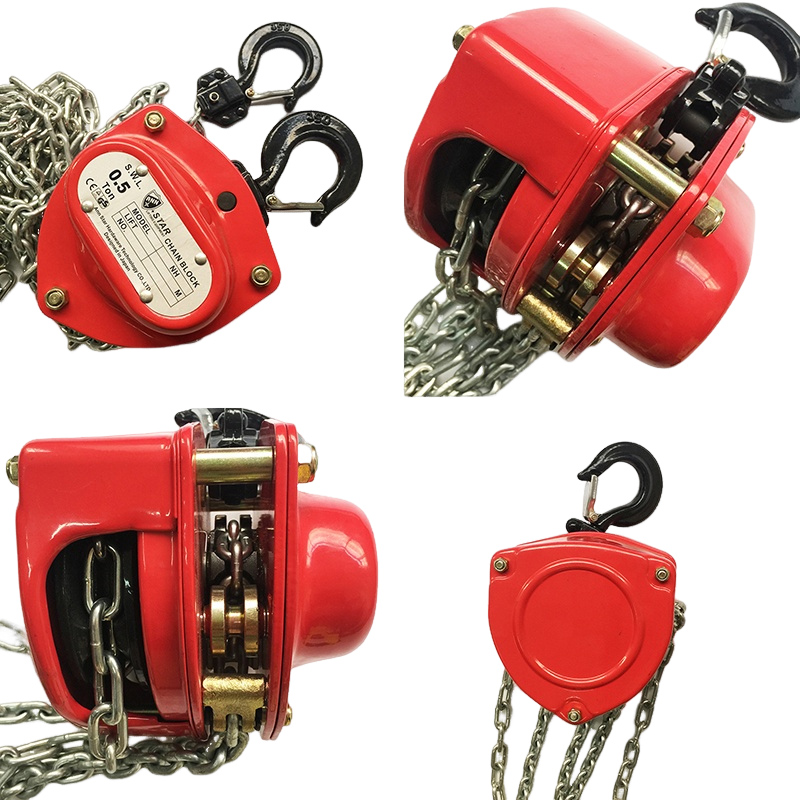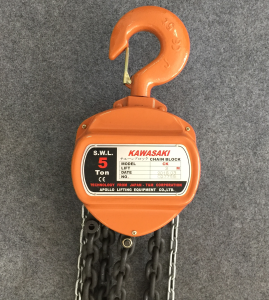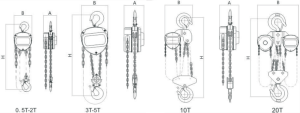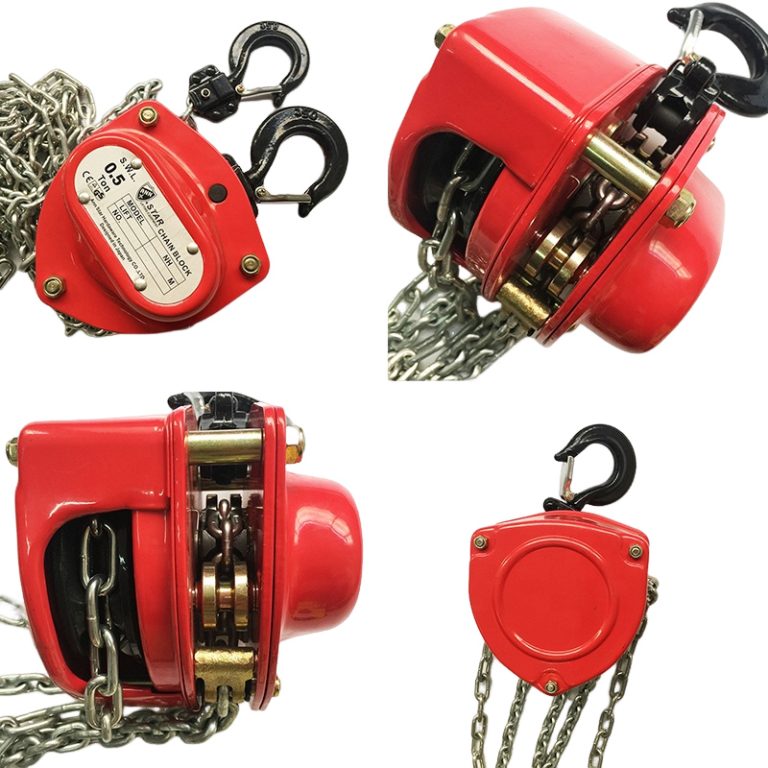Introduction
Chain hoists are essential lifting tools used across industries such as construction, manufacturing, mining, logistics, and warehousing. While many buyers evaluate chain hoists primarily based on initial purchase price, the real costs associated with hoist ownership and operation go far beyond upfront expenditure. Choosing between a low-quality chain hoist and a certified high-end model has far-reaching implications in terms of maintenance frequency, safety risks, downtime costs, and liability exposure.
A low-quality chain hoist might appear cost-effective at the outset, but over time, hidden costs emerge—sometimes with serious financial or legal consequences. In contrast, certified, high-end chain hoists from reputable manufacturers are designed to meet international safety standards and provide long-term value. This article explores the true cost of ownership, comparing the long-term implications of both options across three core areas: maintenance, safety, and liability.
1. Initial Cost vs. Total Cost of Ownership
A basic, unbranded or low-quality manual chain hoist may cost 30–50% less than a certified high-end model. This appeals to budget-conscious buyers, especially in short-term or low-risk applications. However, the Total Cost of Ownership (TCO) includes:
-
Purchase price
-
Installation/setup
-
Routine maintenance
-
Repairs or part replacement
-
Downtime costs
-
Safety incidents and legal consequences
When considering TCO over a 5 to 10-year lifespan, a certified hoist is usually more economical despite the higher initial investment.
2. Maintenance and Repair Costs
a. Frequency of Maintenance
Low-quality chain hoists are often made using cheaper materials—non-hardened steel gears, low-grade chains, substandard bearings, and weak load brakes. This means:
-
More frequent wear and tear
-
Higher need for inspections and adjustments
-
Premature failure of components
A high-end chain hoist, often built from alloy steel components, precision-machined gear systems, and sealed bearings, can run longer maintenance intervals and withstand intensive cycles.
✅ Example: A budget hoist may require servicing every 2–3 months, while a certified model may function efficiently for 6–12 months between minor services.
b. Availability of Spare Parts
Many low-cost hoists lack proper supply chains for spare parts. When a part fails, the entire hoist might need to be replaced. Branded hoists from certified manufacturers provide:
-
Parts catalogs
-
Long-term availability of genuine parts
-
Compatible service tools and manuals
c. Maintenance Labor Costs
Frequent maintenance also increases labor time and the cost of external servicing. For companies with large fleets of hoists, even small differences in service cycles can lead to significant operational expenses.
3. Equipment Downtime and Productivity Loss
When a chain hoist fails, it can halt entire workflows—whether it’s lifting a motor in a factory or moving beams on a construction site.
a. Downtime Risk
-
Low-quality hoists have a higher risk of sudden breakdowns.
-
Frequent minor failures interrupt productivity.
-
In critical operations (e.g., assembly lines), this can cause delays and missed deadlines.
b. Redundancy Requirements
-
Companies may need to purchase backup hoists or units in pairs to cover for unreliable units.
-
High-end certified hoists, with predictable maintenance cycles, reduce the need for redundancy.
🔁 Case Study: A logistics firm using low-cost hoists reported weekly downtime incidents, costing over $10,000 monthly in delayed order fulfillment. Upgrading to certified models with preventive maintenance reduced these losses by over 80%.
4. Safety Risks and Hidden Costs
a. Structural Integrity and Load Capacity
Low-cost hoists are more likely to:
-
Be mislabeled in terms of rated capacity
-
Lack load brakes or overload protection systems
-
Use poor welds or castings prone to failure
Certified hoists undergo testing under ISO, CE, ANSI, or ASME B30.16 standards, ensuring:
-
Accurate load ratings
-
Structural safety margins
-
Reliable emergency braking systems
b. Accidents and Injuries
If a low-cost hoist fails while under load:
-
Workers may be seriously injured or killed
-
Damage to surrounding equipment and infrastructure may occur
-
The incident may trigger investigations, shutdowns, or criminal liability
c. Insurance Implications
Using uncertified or poorly maintained hoists can void insurance coverage in the event of an accident. Insurance carriers may deny claims if the equipment:
-
Is not certified
-
Was not maintained to standard
-
Was being used outside its design parameters
5. Legal and Regulatory Liability
a. Workplace Safety Compliance
Employers are legally obligated in most countries to:
-
Use certified lifting equipment
-
Conduct regular inspections
-
Ensure worker training and safety
If a low-quality hoist causes injury:
-
The employer may be found negligent
-
Government agencies (like OSHA in the US or MOM in Singapore) may impose fines or sanctions
b. Litigation Risks
Families of injured workers or affected third parties may pursue:
-
Civil lawsuits for damages
-
Claims for wrongful death or disability
-
Compensation under workers’ compensation laws
Legal costs alone can exceed hundreds of thousands of dollars, not to mention reputational damage.
c. Environmental and Property Damage
In marine, mining, or chemical industries, hoist failure may release hazardous materials or cause structural failures, exposing the company to environmental liability.
6. Brand Reputation and Long-Term Trust
a. Customer Perception
A company known for cutting corners on safety may lose contracts, certifications, or bids. In competitive markets, buyer confidence in your operation depends on reliability and professionalism.
b. Worker Morale and Retention
Operators are more confident and productive when using reliable, high-end equipment. Poor-quality tools:
-
Increase stress
-
Raise fatigue from harder operation
-
Create distrust in the work environment
7. Benefits of Certified High-End Chain Hoists
Let’s summarize the advantages:
| Feature | Certified High-End Hoist | Low-Quality Hoist |
|---|---|---|
| Durability | 8–10 years under normal use | 1–3 years with frequent failures |
| Maintenance Cost | Low, scheduled, predictable | High, reactive, frequent |
| Spare Parts Availability | Easy access via global service networks | Rare or discontinued |
| Safety Features | Load brakes, overload clutch, tested capacities | Lacking or unreliable |
| Regulatory Compliance | Meets ISO/CE/ANSI standards | May lack certification |
| Insurance Validity | Covered if maintained | Coverage risk due to non-compliance |
| Downtime | Minimal, with scheduled service | Frequent and unpredictable |
| TCO (5-Year Span) | Lower overall | Higher due to repairs, downtime, liability |
8. Making the Right Investment Decision
When choosing a chain hoist, it’s crucial to:
-
Assess your load type and frequency of use
-
Factor in the cost of potential downtime
-
Consider the legal obligations in your country
-
Evaluate after-sales service and support networks
Though a certified hoist may cost 30–100% more initially, the long-term value in uptime, safety, and peace of mind far outweighs the savings from a low-cost model.
Conclusion
Low-quality chain hoists may promise savings at the point of purchase, but they carry significant hidden costs over time. Frequent maintenance, operational downtime, safety incidents, and legal liabilities can turn a low-budget decision into a long-term financial burden.
In contrast, certified high-end chain hoists offer durability, safety, compliance, and performance. They’re not just tools—they’re investments in your operation’s reliability, employee safety, and professional reputation.
When the total cost of ownership is considered, investing in quality isn’t a luxury—it’s a necessity.




